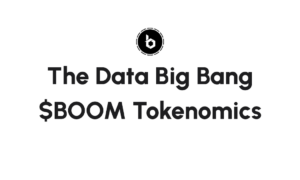Virtual reality (VR) is revolutionizing industries across the globe, and the financial sector is no exception. Investors and financial analysts are leveraging VR tools to visualize complex data, optimize decision-making, and uncover growth opportunities. This innovative approach transforms how portfolios are assessed, allowing users to gain deeper insights while simplifying intricate processes.
The Rise of Virtual Reality in Financial Analysis
Virtual reality has primarily been associated with gaming and entertainment. However, its applications have rapidly expanded into areas such as healthcare, education, and finance. Within the investment world, VR tools offer a unique way to analyze markets, assess risks, and explore portfolio growth. By immersing users in a 3D environment, these tools make financial data more interactive and easier to comprehend.
How VR Tools Enhance Financial Decision-Making
One of the most significant advantages of using VR in finance is its ability to present data visually. Financial analysts often deal with massive datasets that can be overwhelming. Virtual reality simplifies this process by presenting the information in an immersive format. For instance, investors can navigate through a 3D model of their portfolio, analyzing various assets’ performance in real-time.
Furthermore, VR tools allow for scenario simulation. Investors can project potential outcomes based on different market conditions, making it easier to predict future trends. This proactive approach improves decision-making and reduces the risk of unforeseen losses.
Improved Collaboration and Engagement
Virtual reality fosters collaboration among team members. In traditional settings, portfolio discussions are often confined to reports or presentations. With VR, teams can collaborate in a shared virtual space, regardless of their physical location. This interactive environment encourages better communication and more dynamic discussions.
Moreover, VR tools enhance engagement by making financial data more accessible. Investors who might otherwise find spreadsheets daunting can now interact with data in an intuitive, user-friendly way. This accessibility is particularly beneficial for novice investors seeking to understand complex financial concepts.
Applications of VR in Portfolio Management
The potential applications of VR in portfolio management are vast. From risk analysis to asset allocation, these tools are reshaping traditional practices. Below are some key areas where VR is making a significant impact:
Risk Assessment and Mitigation
Understanding risk is a cornerstone of successful investing. Virtual reality tools provide a comprehensive view of potential risks by visualizing how various factors interact. For instance, investors can examine how geopolitical events or market shifts might affect their portfolio. This level of detail enables better preparation and more informed decision-making.
Enhanced Data Visualization
Data visualization is critical for identifying trends and patterns. VR tools take this a step further by allowing users to explore data in a three-dimensional space. For example, investors can use heat maps to identify high-performing assets or areas of concern. This immersive experience makes it easier to spot opportunities and address challenges.
Real-Time Market Analysis
In the fast-paced world of finance, staying updated is crucial. VR tools offer real-time market analysis, enabling investors to monitor fluctuations and respond quickly. This feature is particularly useful during periods of volatility, where timely decisions can make a significant difference.
Benefits of Using VR Tools for Growth Exploration
Growth exploration is a critical aspect of investment strategy. VR tools provide several benefits that make this process more efficient and effective:
Identifying Growth Opportunities
Virtual reality tools help investors identify growth opportunities by presenting data in a holistic manner. For example, users can explore emerging markets or industries within a virtual environment, assessing their potential for growth. This comprehensive view aids in making strategic investment choices.
Enhancing Strategic Planning
Strategic planning involves considering various factors, such as market conditions and asset performance. VR tools allow investors to simulate different scenarios, helping them refine their strategies. By visualizing potential outcomes, users can develop more robust investment plans.
Increasing Investor Confidence
Investors often struggle with uncertainty, particularly in volatile markets. VR tools provide a clearer picture of potential risks and rewards, boosting confidence in decision-making. This increased clarity can lead to more decisive actions and better results.
Challenges and Limitations
While the benefits of VR tools are evident, there are challenges to consider. First, the cost of implementing VR technology can be prohibitive for some investors. High-quality VR equipment and software require significant investment, which may not be feasible for smaller firms.
Additionally, there is a learning curve associated with adopting new technology. Users need training to fully utilize VR tools, which can be time-consuming. Finally, the accuracy of VR models depends on the quality of data input. Inaccurate or incomplete data can lead to misleading insights.
The Future of VR in Investment Portfolios
The future of VR in investment portfolios looks promising. As technology advances, VR tools are expected to become more accessible and affordable. Innovations such as artificial intelligence (AI) integration will further enhance their capabilities, allowing for even more precise analysis.
Moreover, as the financial industry increasingly embraces digital transformation, VR tools will likely become a standard component of portfolio management. This shift will open new opportunities for investors and analysts alike, fostering a more efficient and informed investment Space.
Conclusion
Virtual reality is reshaping how investors explore portfolios and growth opportunities. By offering immersive data visualization, enhanced collaboration, and real-time analysis, VR tools are transforming traditional financial practices. Despite challenges such as cost and learning curves, the benefits of adopting VR technology are undeniable. As this innovative approach gains traction, it is set to play a pivotal role in the future of investment portfolio management.



































